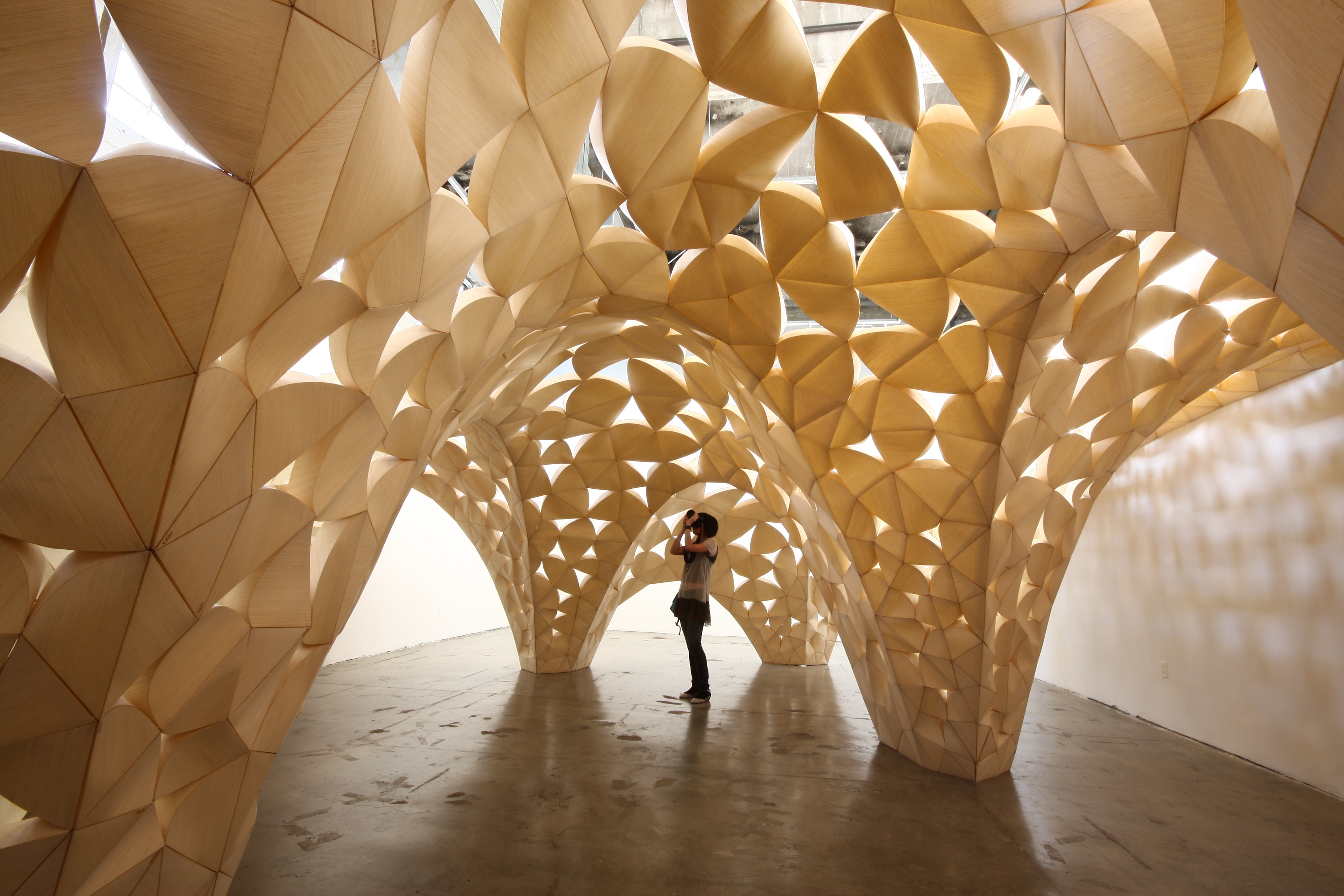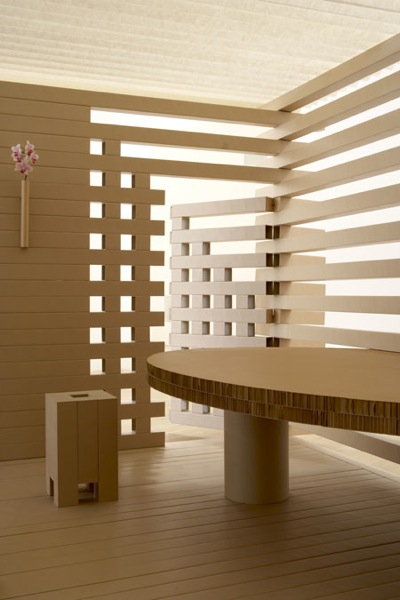This Sunday the Washington Post ran two different architecture/design articles, one about the MoMA prefab housing exhibit – “Home Delivery: Fabricating the Modern Dwelling” and the other about IKEA’s new catalog and its pastiche of Modern and Classic styles.
Both articles dwell on the nature of consumerism and mass production in our modern world, but from highly different angles. Philip Kennicott is quite deliberate in his discussion of the evolution of manufactured housing, from the early portable emigrant cottages through the era of Sears and Roebuck to the famed Modernists (with a capital “M”) Le Corbusier and Moshe Safdie and on through a contemporary piece designed by Richard Horden and Haack + Hoepfner Architects. Through this history lesson he also grapples with the two sides of pre-manufacturing/pre-fab, the mass produced bland utilitarian home and the architectural object d’art democratized and brought within the public reach. In the end he ends up questioning whether pref-fab can ever really be the answer to the Design like you Give a Damn movement, or if it will be the next wired-tired-expired status symbol.

[Image via Peter Morgan published in accordance with creative commons attribution license.]
This Sunday the Washington Post ran two different architecture/design articles, one about the MoMA prefab housing exhibit – “Home Delivery: Fabricating the Modern Dwelling” and the other about IKEA’s new catalog and its pastiche of Modern and Classic styles.
Both articles dwell on the nature of consumerism and mass production in our modern world, but from highly different angles. Philip Kennicott is quite deliberate in his discussion of the evolution of manufactured housing, from the early portable emigrant cottages through the era of Sears and Roebuck to the famed Modernists (with a capital “M”) Le Corbusier and Moshe Safdie and on through a contemporary piece designed by Richard Horden and Haack + Hoepfner Architects. Through this history lesson he also grapples with the two sides of pre-manufacturing/pre-fab, the mass produced bland utilitarian home and the architectural object d’art democratized and brought within the public reach. In the end he ends up questioning whether pref-fab can ever really be the answer to the Design like you Give a Damn movement, or if it will be the next wired-tired-expired status symbol.
Blake Gopnick, on the other hand, is a bit more free flowing in his exploration of the international Swedish design giant’s latest catalog. He discusses the reality of IKEA as a means of bringing the Modernist ideal of clean lines and democratic affordability to the American (and worldwide) domestic market, yet this aesthetic ideal is lacking the revolutionary spirit of the Modernist movement. A Poang bares no ill-will towards a Louis XVI settee, whereas the Vasily Chair seems almost murderous in its purpose. An interesting counterpoint that Gopnick brings into his article is Design within Reach, The Henri Bendel to IKEA’s Target. Whereas IKEA is is synonymous with cheap comforting (if not comfortable) furniture, Design within Reach (or DWR to those in the know) is all about status. The name is almost a farce, whereas IKEA is within the reach of college students, DWR is within reach of the DINCs (double income no children). What intrigues me though, is where Gopnick takes us in closing. In discussing both of these mass produced furniture solutions he is left feeling that in the end there is still only two options, Modernism and Pottery Barn, or as he more succinctly puts it:
There’s not much to take modernism’s place out on the cutting edge. The movement may not be as fresh or lively as when it started out, but it’s still less tired than faux Chippendale or neo-Colonial cherry or most other options out there.
So where does this leave me, well for starters I find it totally intriguing that both of these articles leave us with the idea that there are two contemporary mass produced forms: the object and the tool. One is a method of achieving comfort or shelter, but provides no real idealistic statement, and the other is a fully realized statement but still prohibitive in its availability; think the iphone versus the blackberry. The second issue I have is that both of these articles seem to have no concept of a post-modern design esthetic, there is no concept of design as irony. Kennicott at least deals with the a contemporary housing model, but Gopnick completely misses the world of Frank Gehry’s Wiggle Chair or Karim Rashid’s sensuous curving chairs. I also have to wonder what he would make of MUJI‘s utilitarian housewares which ARE much more affordable than DWR but still evoke the starkness that Modernism was striving for. Lastly, both authors dance around the issue, but never really question whether this whole mass production is even a good thing. I have to wonder if Big Box Architecture is not just a symptom of the early 21st century and the American Rocco period of excess, and we would be better suited emotionally, spiritually, and globally if we sought economical design solutions that responded to individual needs. With its simple lines and Iconic nature it is easy to forget that the famous Modernist furniture of Marcel Breuer and the Ludwig Mies van der Rohe were responses to external stimuli, and not universal solutions for seating.


